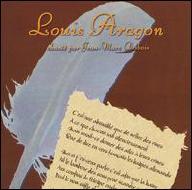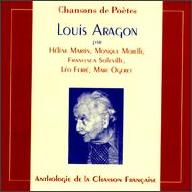Sharp-edged imagery and political consciousness made Louis Aragon one of the seminal figures behind the evolution of Dadaistic and Surrealistic poetry, hleping to build the national Writers Committee of the French Communist Party. An outspoken proponent of Communism, Aragon was one of the truly artistic visionaries of the early-twentieth century. Aragon's literary career began shortly after his graduation from the Lycee Carnot in 1916. Taking a brief break from his medical studies at the University Of Paris, he served briefly as an "auxiliary doctor" during World War One. While in the military, he met poet Andre Breton who exposed him to Dadaism and Surrealism. Although he completed his education following the war, he remained committed to literary pursuits. In 1919, Aragon joined with Breton and Philippe Soupoult to launch a review, "Literature". The following year, he published his first collection of poems, "Feu De Joie". Aragon continued to write at a prolific rate, publishing his second collection of poems, "Le Mouvement Perpetual' in 1925 and a novel, "Le Paysan De Paris", in 1926.
Joining the French Communist Party in 1920, Aragon began to balance his writing with political involvement. After publishing a highly-revolutionary novel, "The Red Front", in 1930, he was arrested and received a five year suspended sentence. He continued to write for communist journals. During the 1930s, Aragon was highly critical of the Nationalists during the Spanish Civil War. His novels included the five volume, "Le Monde Reel", which advocated socialist realism.
Aragon remained politically active for the rest of his life. In 1957, he was awarded the Lenin Peace Prize. Eleven years later, he publicly condemned the Soviet intervention of Czechoslavakia. Aragon's later works included autobiographical poems, a history of the Soviet Union and a historical novel.
An album of Aragon's poems set ot music, "Chasons De Poetes: Anthologie De Chanson Francais", was released in 1998. ~ Craig Harris, Rovi













